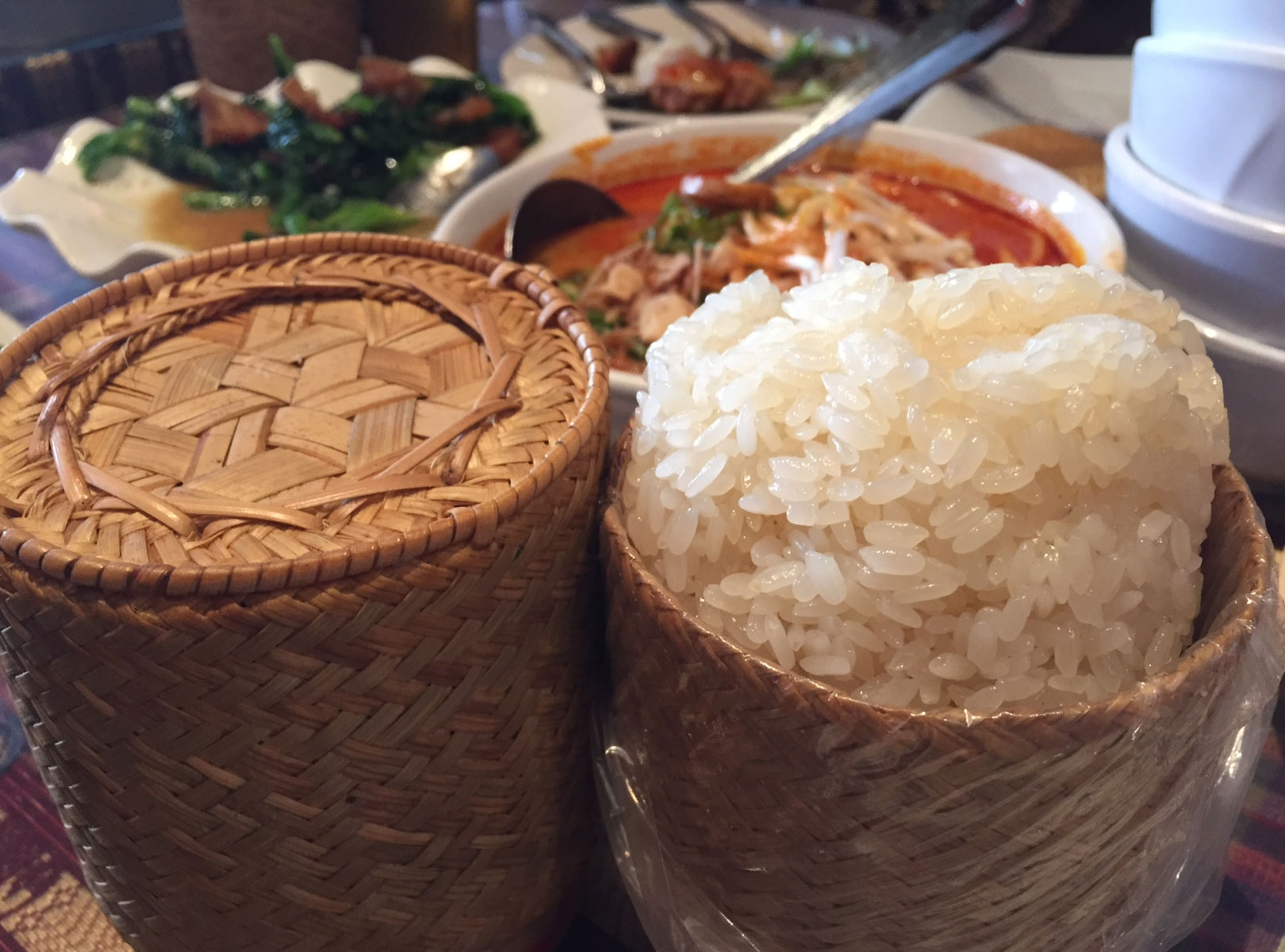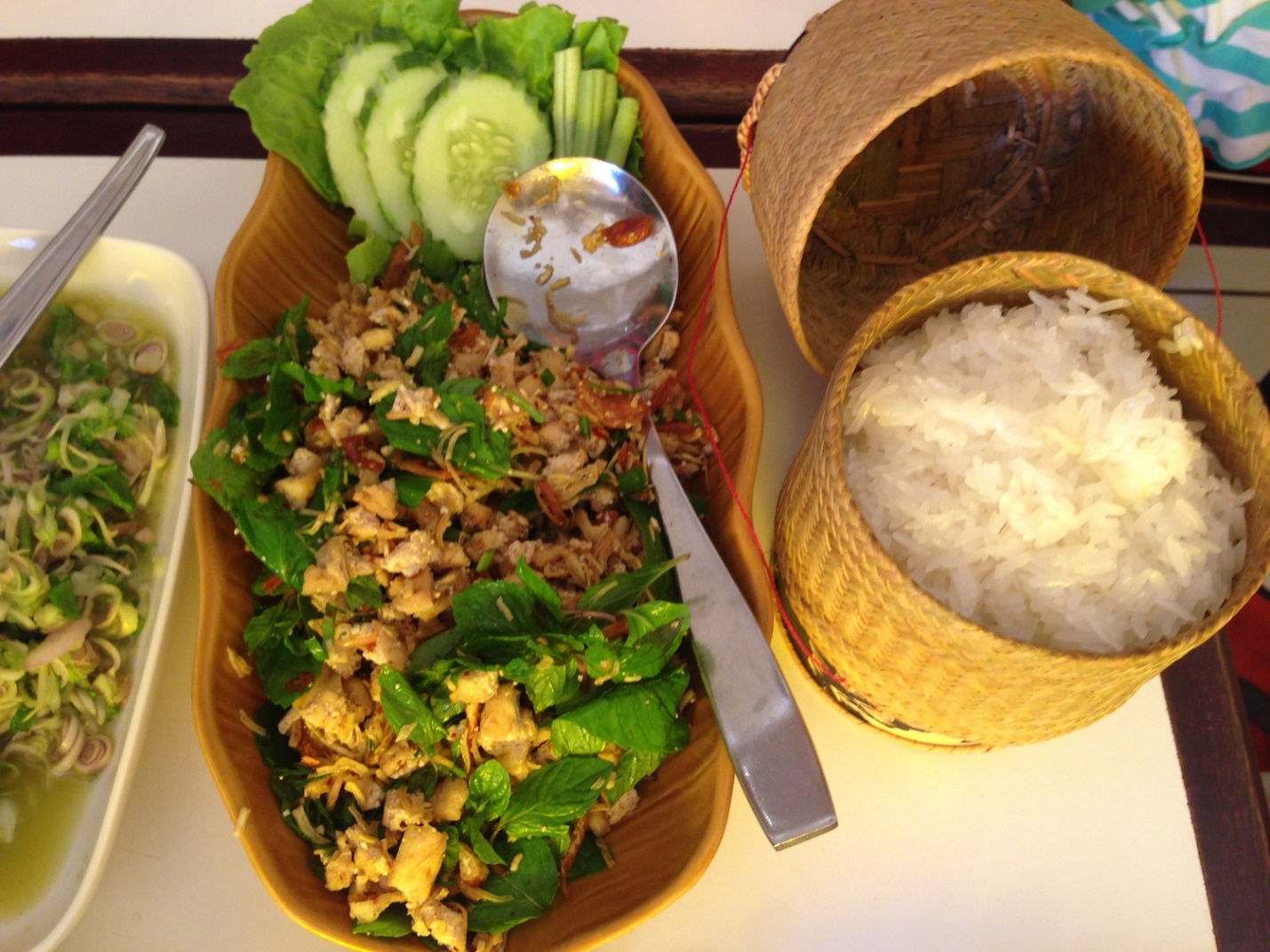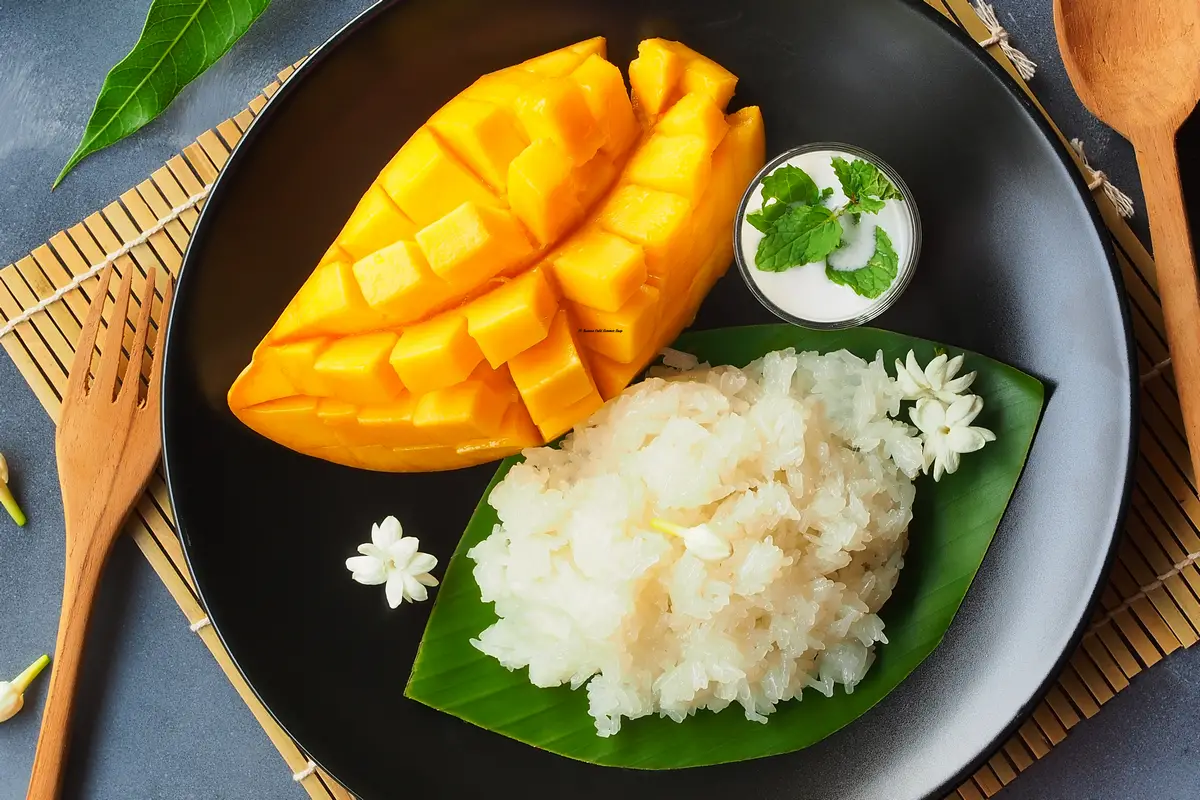Laos sticky rice, a culinary delight with a unique texture, flavor, and aroma, holds deep cultural significance in Laos, where it plays a central role in traditional ceremonies and festivals.
Its versatility extends beyond its symbolic value, as Laos sticky rice is incorporated into a wide range of dishes, from the classic khao niao mamuang (sticky rice with mango) to the savory khao lam (bamboo sticky rice). Join us as we delve into the world of Laos sticky rice, exploring its varieties, preparation methods, health benefits, and cultural significance.
Laos Sticky Rice
Laos sticky rice, also known as khao niao, is a unique and flavorful variety of rice that holds a special place in Laotian cuisine and culture. Unlike ordinary rice, sticky rice has a distinctive texture that makes it ideal for eating with the hands, as it can be easily rolled into small balls for dipping in sauces or other dishes.
Unique Characteristics
Laos sticky rice is characterized by its soft, glutinous texture, which gives it a slightly chewy and sticky consistency. This texture is due to the high starch content in the rice, which gelatinizes during cooking and creates a sticky bond between the grains.
The rice also has a slightly sweet and nutty flavor, with a pleasant aroma that is often described as earthy or floral.
Cultural Significance
Sticky rice is not just a food in Laos; it is a symbol of Laotian identity and culture. It is a staple food that is eaten at almost every meal, and it is also used in many traditional ceremonies and festivals.
For example, sticky rice is used in the Lao New Year celebration, where it is offered to Buddha and to ancestors as a symbol of respect and gratitude.
Varieties and Preparation of Laos Sticky Rice
Laos sticky rice is a staple food in Lao cuisine, and it comes in a variety of types, each with its own distinct qualities. The most common type of sticky rice is glutinous rice, which is also known as sweet rice.
Glutinous rice has a sticky texture when cooked, and it is often used in desserts and other sweet dishes. Other types of sticky rice include black sticky rice, red sticky rice, and purple sticky rice. These varieties have a slightly different flavor and texture than glutinous rice, and they are often used in savory dishes.
To prepare Laos sticky rice, the rice is first soaked in water for several hours. This helps to soften the rice and make it easier to cook. The rice is then steamed in a bamboo steamer until it is cooked through.
Remember to click dyer library saco to understand more comprehensive aspects of the dyer library saco topic.
Once the rice is cooked, it is typically served with a dipping sauce or other condiments.
Tips for Achieving the Perfect Texture and Flavor
- Use high-quality sticky rice. The quality of the rice will affect the final texture and flavor of the dish.
- Soak the rice for at least 4 hours. This will help to soften the rice and make it easier to cook.
- Steam the rice for the correct amount of time. Overcooked rice will be mushy, while undercooked rice will be hard.
- Serve the rice with a dipping sauce or other condiments. This will help to enhance the flavor of the rice.
Health Benefits of Laos Sticky Rice
Laos sticky rice is a nutritious and versatile grain that offers several health benefits. It is a good source of dietary fiber, which can help to promote a feeling of fullness and regularity. Laos sticky rice is also a good source of complex carbohydrates, which provide sustained energy throughout the day.
Examine how miami vs los angeles can boost performance in your area.
Nutritional Value of Laos Sticky Rice
Laos sticky rice is a good source of the following nutrients:* Dietary fiber
- Complex carbohydrates
- Iron
- Calcium
- Magnesium
- Phosphorus
- Potassium
- Zinc
Potential Health Benefits of Laos Sticky Rice
The health benefits of Laos sticky rice include:* Improved digestion:The dietary fiber in Laos sticky rice can help to promote a feeling of fullness and regularity. It can also help to reduce the risk of constipation and other digestive problems.
Sustained energy
The complex carbohydrates in Laos sticky rice provide sustained energy throughout the day. This can help to improve focus and concentration, and reduce fatigue.
Reduced risk of chronic diseases
Examine how orange beach tide chart can boost performance in your area.
The dietary fiber, complex carbohydrates, and antioxidants in Laos sticky rice may help to reduce the risk of chronic diseases such as heart disease, stroke, and type 2 diabetes.
Obtain access to 6801 dixie highway to private resources that are additional.
Laos Sticky Rice in Traditional Cuisine
Laos sticky rice is an essential ingredient in traditional Lao cuisine, adding a unique flavor and texture to a wide range of dishes. From sweet desserts to savory main courses, Laos sticky rice is a versatile ingredient that elevates the dining experience.
Khao Niao Mamuang: Sticky Rice with Mango
Khao niao mamuang is a classic Laos dessert that combines the sweetness of ripe mango with the nutty flavor of sticky rice. The rice is cooked in coconut milk, giving it a rich and creamy texture. It is then served with fresh mango slices and a drizzle of sweet syrup.
Khao Lam: Bamboo Sticky Rice, Laos sticky rice
Khao lam is a traditional Lao dish that is cooked in bamboo tubes. The rice is mixed with coconut milk, sugar, and spices, and then sealed in bamboo tubes and cooked over an open fire. The bamboo imparts a unique smoky flavor to the rice, creating a dish that is both flavorful and aromatic.
Laos Sticky Rice as a Symbol of Culture
In Laos culture, sticky rice is more than just a staple food; it is a symbol of unity, hospitality, and tradition. Its significance is deeply ingrained in the fabric of Lao society, permeating rituals, ceremonies, and everyday life.
Sticky Rice in Rituals and Ceremonies
Sticky rice holds a central role in numerous Lao rituals and ceremonies. During the Lao New Year, also known as Pi Mai, sticky rice is used to make offerings to the spirits and ancestors. It is believed that these offerings bring good fortune and prosperity in the coming year.
Sticky rice is also an essential component of the Baci ceremony, a traditional Lao ritual to welcome guests, bless newborns, and celebrate important life events. During the ceremony, sticky rice is placed on a banana leaf and adorned with flowers and candles.
The participants then take turns tying strings around the sticky rice, making wishes for the person being honored.
You also can understand valuable knowledge by exploring komodo las vegas.
Sticky Rice in Everyday Life
Beyond its ritualistic significance, sticky rice is an integral part of daily life in Laos. It is the main ingredient in the national dish, khao niew, which is typically eaten with grilled or steamed meat and vegetables. Sticky rice is also used to make a variety of snacks and desserts, such as khao lam (sticky rice cooked in bamboo) and khao niao mamuang (sticky rice with mango).
The way sticky rice is eaten also reflects the values and traditions of the Lao people. It is customary to eat sticky rice with one’s hands, using the thumb and forefinger to form a small ball. This practice symbolizes the importance of communal dining and sharing food with others.
Final Wrap-Up
Laos sticky rice is more than just a food; it is a symbol of Laotian identity and a testament to the country’s rich culinary heritage. Its unique characteristics, versatility, and cultural significance make it a beloved staple that continues to be cherished by the Laotian people.
FAQ
What is the difference between Laos sticky rice and other types of rice?
Laos sticky rice has a higher amylopectin content than other types of rice, giving it its characteristic sticky texture when cooked.
How is Laos sticky rice traditionally prepared?
Traditionally, Laos sticky rice is steamed in bamboo baskets over a fire or hot coals.
What are the health benefits of Laos sticky rice?
Laos sticky rice is a good source of fiber, protein, and vitamins, and it has a low glycemic index, making it a suitable option for people with diabetes.





